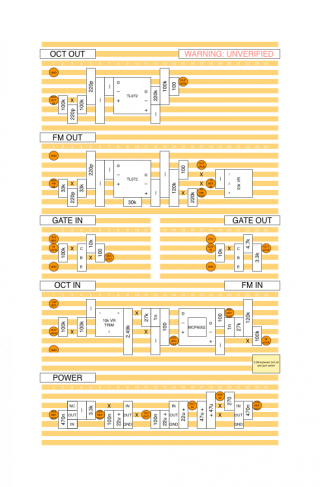It doesn't seem worth keeping the external reference voltage? It just adds more components to add in. If I can change the resistors on the opamp circuit to give me the same result anyway—
In all design, and especially with analog circuit design, there are many complex trade-offs to be made.
All analog circuitry has an undesirable effect where changes in the power supply couple to the signals. The degree to which this is suppressed is called "Power Supply Rejection Ratio", or PSRR. Even though it varies with frequency, and perhaps other changes if it's not purely linear, often for opamps a single number is given. Of course, it's spec'd at some low frequency, to make the spec better and the part more marketable. Usually the spec is in decibels, unless the part has really terrible performance, in which case the marketing folks who write the datasheet will play tricks like using a percentage, so it doesn't look so horrible, or they'll just omit that spec entirely and hope nobody notices.
Shunt style voltage references will usually have a dynamic impedance spec. It's the equivalent resistance, by ohms law, of voltage change at the reference output due to change in the series current flowing through the chip. Ideally, you'd like the power supply to be able to change quite a bit and have the reference voltage not change at all, even though the voltage on the resistor feeding it will change, so the current changes. Usually dynamic impedance is under 1 ohm. Even the LM336 (my personal favorite for a low-cost reference) is 0.2 ohm. So if you feed current to the LM336 with a 2K resistor, the change in reference voltage as the power supply fluctuates, will more-or-less be a resistor divider of 2000 to 0.2, or 80 dB PSRR.
You can further improve PSRR, at least in the audio band, by low-pass filtering. But that comes at the cost of higher source impedance, which may or may not cause more problems than any improvement it makes. Everything is a trade-off.
But if you skimp on a quality voltage reference and just use a resistor divider from the power supply, the PSRR is pretty bad. If your resistors divide by 4, that's a PSRR of only 12 dB. That 3-resistor circuit I posted yesterday will suffer this sort of issue, pretty low PSRR.
Maybe PSRR doesn't matter? You can try to low-pass filter the power, to clean it up before using it. Or if source impedance isn't a problem (it certainly matters in that 3-resistor circuit), you could low-pass filter the reference voltage too.
Or maybe whatever you're using the control voltage for won't result in terrible sound if the signal is a little (or a lot) noisy?
Everything is a trade-off. Just keep PSRR in mind. If you omit a proper voltage reference and use just resistors, noise on the power supply can much more easily couple to your signal.


